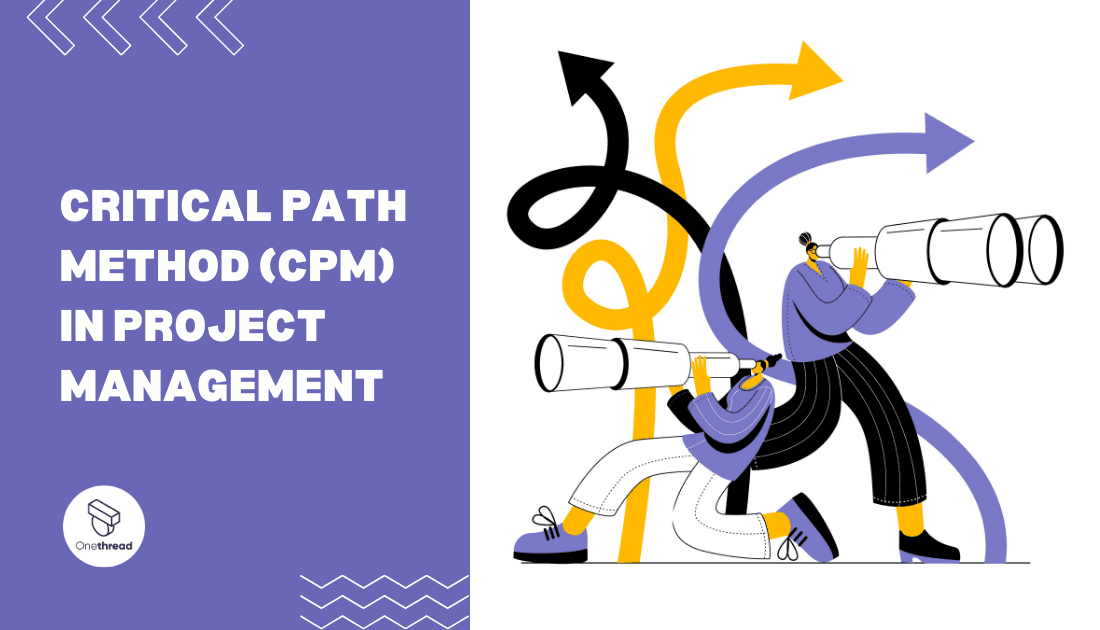In the vast realm of project management, where timelines converge and tasks interlace, lies a strategic approach that can be likened to the compass of success. The Critical Path Method (CPM), revered by seasoned planners and proven by successful projects, is the guiding beacon that illuminates the way forward.
As you venture deeper into the intricacies of project planning, dear reader, let us embark on a voyage through the waters of CPM, uncovering its treasures and unlocking the secrets to effective project execution.
From untangling the web of dependencies to identifying the most critical activities, this article is your compass, steering you towards the path of triumph. So, hoist the sails of curiosity, and together, let us set sail on this exciting expedition into the world of the Critical Path Method!
What is the Critical Path Method?
The Critical Path Method (CPM) is a powerful and essential technique in the realm of project management. It serves as a strategic compass, guiding project planners and managers through the labyrinth of tasks, deadlines, and dependencies.
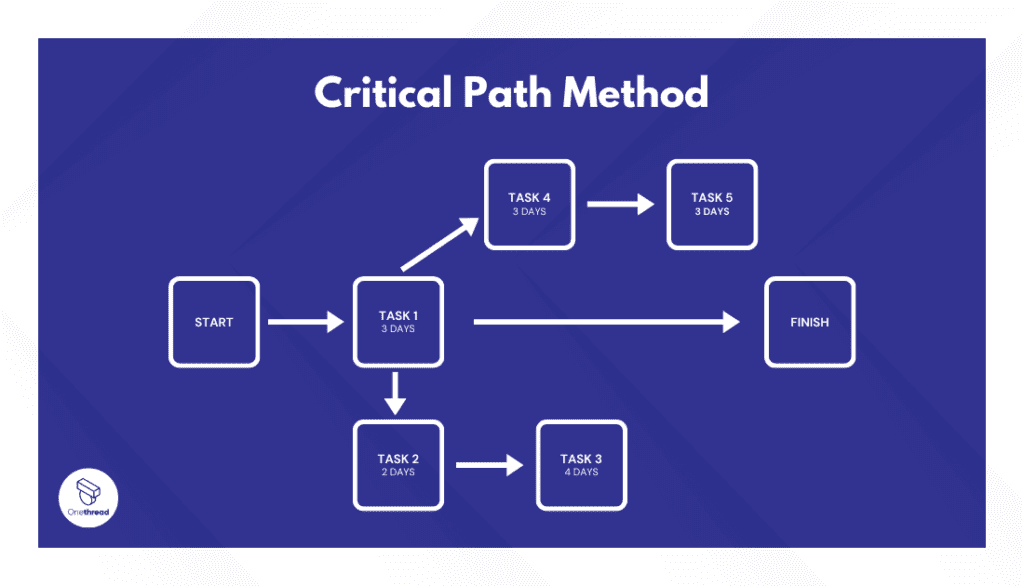
By identifying the critical path, a user identifies the longest sequence of dependent tasks within a project. Project paths like the CPM allow for a precise understanding of the project’s timeline and potential bottlenecks.
This method empowers project teams to prioritize tasks and their details, allocate resources efficiently, and stay on track to meet project deadlines successfully. By uncovering the most critical activities that have to be completed on time, CPM equips project managers with the foresight needed to address potential delays proactively.
This approach has been embraced by professionals worldwide for its ability to streamline project workflows and data, optimize resource allocation, and ensure project success.
In essence, the Critical Path Method is an invaluable tool that enables project managers to navigate complexities, mitigate risks, and chart a course towards triumphant project completion.
Why Use the Critical Path Method Over Other Project Paths? Importance in Project Management
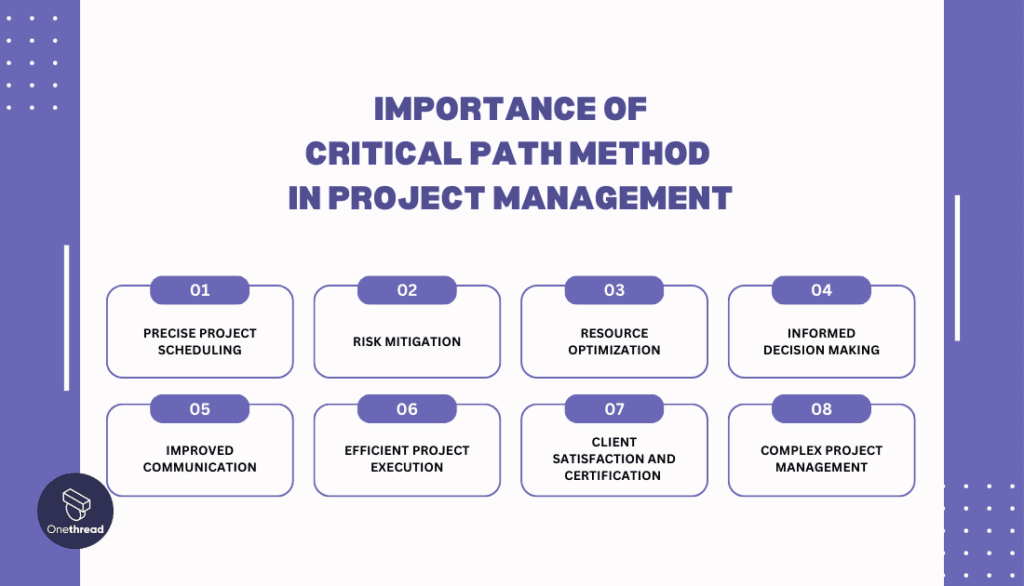
The Critical Path Method (CPM) holds paramount importance in project management for several compelling reasons:
Precise Project Scheduling
CPM allows project managers to create accurate and reliable project schedules by identifying the critical path – the sequence of activities that determine the project’s minimum duration. This knowledge enables better planning, resource allocation, and deadline setting, ensuring you get to manage your project efficiently. It keeps your projects stay on track and within the expected timeline.
Risk Mitigation
By highlighting the critical activities and their dependencies, critical path method helps identify potential bottlenecks and points of vulnerability in the project. This proactive approach allows project managers to focus their attention on critical tasks, ensuring they are completed on time and minimizing the risk of project delays.
Resource Optimization
Understanding the interdependencies of tasks enables effective resource management. With critical path method, project managers can allocate resources efficiently, avoiding unnecessary delays caused by resource shortages or conflicts. This leads to cost savings and maximizes productivity.
Informed Decision Making
CPM provides a clear visual representation of the project’s timeline and key milestones. This empowers project managers to make well-informed decisions when faced with changes or unexpected events, ensuring that adjustments to the project plan do not disrupt the overall project schedule.
Improved Communication
CPM fosters better communication and collaboration among project stakeholders. With a shared understanding of the critical path and project timelines, teams can work cohesively towards common goals, enhancing project coordination and reducing misunderstandings.
Efficient Project Execution
Armed with insights from critical path method, project teams can streamline their workflows, avoid unnecessary delays, and maintain a steady project pace. This efficiency not only boosts productivity but also enhances the project’s chances of success.
Client Satisfaction and Certification
Clients and stakeholders often have high expectations for project completion within specific timeframes. The Critical Path Method helps project managers meet these expectations, leading to increased client satisfaction and stronger relationships.
Complex Project Management
In today’s increasingly complex projects, CPM is an invaluable tool. It can handle projects with numerous interconnected tasks and intricate dependencies, bringing order to the chaos and ensuring projects are well-structured and manageable.
How to Use the Critical Path Method?
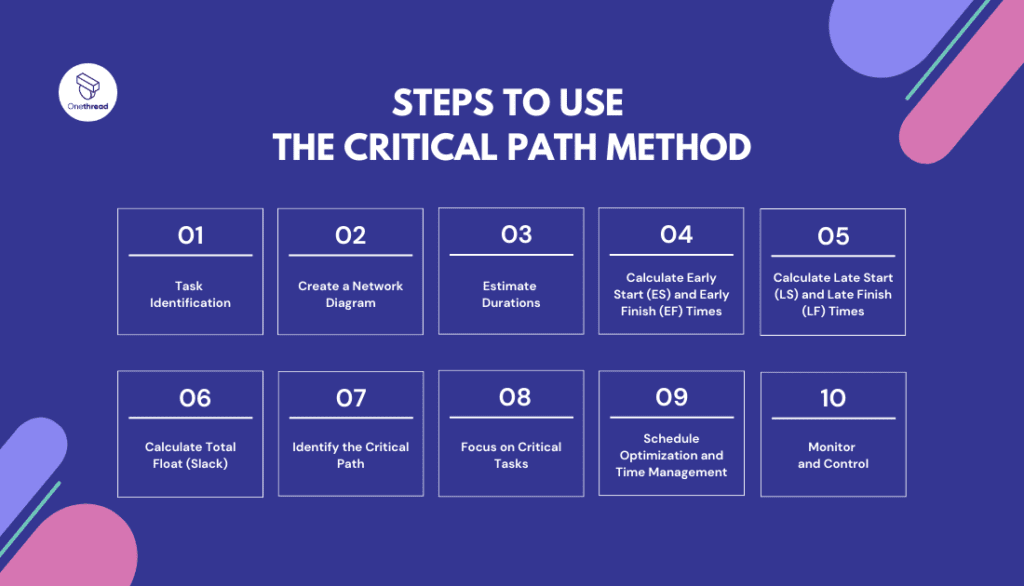
Using the Critical Path Method (CPM) in project management ensures a sequential managing projects approach for process development. It involves the following steps:
Task Identification
Begin by identifying all the tasks required to complete the project. With effective project management, break down the project into smaller, manageable activities. Make sure to define the dependencies between tasks – which tasks need to be completed before others can begin.
Create a Network Diagram
Construct a project network diagram for your business that visually represents the tasks and their dependencies. You can use boxes or circles to represent tasks and arrows to indicate the flow and dependencies between tasks.
Estimate Durations
Determine the time required to complete each task. Accurate time estimation is crucial for effective critical path method analysis.
Calculate Early Start (ES) and Early Finish (EF) Times
Use the dependencies and task durations to calculate the earliest start (ES) and earliest finish (EF) times for each task. The ES of a task is the earliest time it can start, and the EF is the earliest time it can finish.
Calculate Late Start (LS) and Late Finish (LF) Times
Work backward through the project network to calculate the latest start (LS) and latest finish (LF) times for each task. The LS of a task refers to the latest time indicating the time a team can start the tasks in hand without delaying its overall completion, and the LF is the latest time it can finish.
Calculate Total Float (Slack)
Determine the total float (slack) for each task by finding the difference between its LS and ES or LF and EF. Tasks with zero total float are critical, as any delay in these tasks will delay the project.
Identify the Critical Path
The critical path is the longest path in the project network and comprises tasks with zero total float. Tasks on the critical path must be completed on time to ensure the project’s timely completion.
Focus on Critical Tasks
Once you have identified the critical path, focus your attention on managing and monitoring the critical tasks closely. These tasks are vital for keeping the project on schedule, and any delays in them can impact the overall project timeline.
Schedule Optimization and Time Management
If there are any constraints or delays identified during the CPM analysis, consider exploring options to optimize the schedule. This might involve resource reallocation, task prioritization, or fast-tracking certain activities to reduce the project’s duration.
Monitor and Control
Continuously monitor the progression of your tasks, making sure they adhere to the planned schedule. Keep an eye on any potential changes or disruptions that may affect the critical path. Regularly update the project network diagram to reflect any adjustments made during the project’s execution.
By employing the Critical Path Method, project managers can gain a clear understanding of their project’s timeline, identify potential risks, and ensure successful project execution through efficient task management and scheduling. You can also employ a project management tool for better results.
How Do You Calculate Critical Path?- A Step by Step Guide
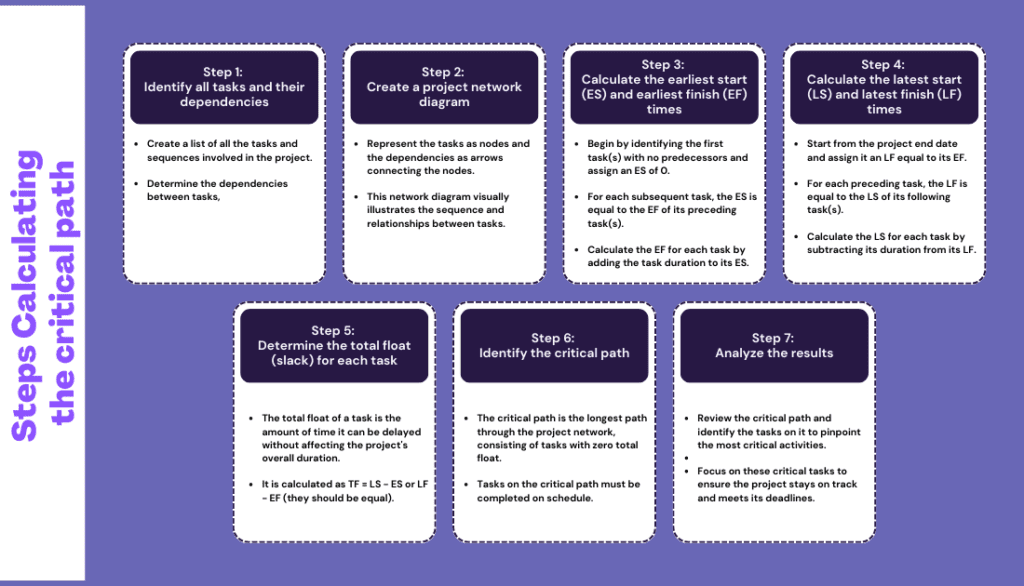
Calculating the critical path involves several steps in the Critical Path Method (CPM). Here’s an easy guide to determine the critical path in your specific project:
Step 1: Identify all your tasks and related dependencies
- Create a list of all the tasks and sequences involved in the project.
- Understand the dependencies among the tasks, i.e., which tasks must be completed before others can begin.
Step 2: Create a project network diagram
- Represent the tasks as nodes (usually depicted as circles) and the dependencies as arrows connecting the nodes.
- This network diagram visually illustrates the sequence and relationships between tasks.
Step 3: Calculate the earliest start (ES) and earliest finish (EF) times
- Begin by identifying the first task(s) with no predecessors (usually the project start date) and assign an ES of 0.
- For each subsequent task, the ES is equal to the EF of its preceding task(s).
- Calculate the EF for each task by adding the task duration to its ES.
Step 4: Calculate the latest start (LS) and latest finish (LF) times
- Start from the project end date (usually represented as the last task) and assign it an LF equal to its EF.
- For each preceding task, the LF is equal to the LS of its following task(s).
- Calculate the LS for each task by subtracting its duration from its LF.
Step 5: Evaluate the total float or slack for every task
- The total float of a task is the amount of time you can take and delay without making any significant changes in the project’s duration. It is calculated as TF = LS – ES or LF – EF (they should be equal).
Step 6: Understand the critical path
- The critical path (CP) refers to the longest path through the project network, consisting of tasks with zero total slack or float.
- Tasks on the critical path must be completed on schedule; any delay in these tasks will cause a delay in the overall project timeline.
Step 7: Analyze the results
- Review the critical path and identify the tasks on it to pinpoint the most critical activities.
- Focus on these critical tasks to ensure the project stays on track and meets its deadlines.
By following these steps and diligently analyzing the project network diagram, you can accurately calculate the critical path and gain valuable insights into your project’s timeline and potential bottlenecks.
How Are CPM and PERT Different?
As we know, CPM refers to Critical Path Method while PERT stands for Program Evaluation and Review Technique. These are both project management techniques used to plan, schedule, and control projects, but they differ in their approach and application. Here are the differences between CPM and PERT:
Focus and Project Types
- CPM: CPM is primarily used for projects with a known and deterministic duration for each activity. It is suitable for projects with well-defined and predictable tasks and where the emphasis is on minimizing the project duration.
- PERT: PERT is designed for projects with uncertain and variable activity durations. It is particularly useful for complex projects where there is a degree of uncertainty in task durations and where the focus is on managing risk and uncertainty.
Activity Duration Estimation
- CPM: CPM relies on single-point estimates for activity durations, assuming a fixed duration for each task. This means that CPM schedules are more deterministic and straightforward to calculate.
- PERT: PERT uses three-point estimates for activity durations – optimistic (O), pessimistic (P), and most likely (M) durations. The PERT technique incorporates this probabilistic approach to estimate activity durations, considering best-case, worst-case, and most likely scenarios. This helps account for uncertainty and provides a more realistic estimate of project duration.
Critical Path Calculation
- CPM: In CPM, the critical path is determined by identifying the longest path of dependent activities, with zero total float (slack). Tasks on the critical path must be completed on time to avoid delaying the project’s overall completion.
- PERT: PERT also calculates the critical path, but it accounts for uncertainty by using the expected duration for each activity (E), calculated as (O + 4M + P) / 6. The critical path in PERT represents the most likely path through the project network, considering the uncertainties in activity durations.
Application of Float/Slack
- CPM: CPM uses total float (or slack) to measure the flexibility in scheduling non-critical tasks. Total float in CPM indicates the amount of time a non-critical task can be delayed without delaying the project’s completion date.
- PERT: PERT does not use total float because of its probabilistic nature. Instead, PERT focuses on the expected durations of activities to determine the project’s expected completion or finish time.
Risk Management
- CPM: CPM is less focused on risk management and other critical jobs and is better suited for projects with low uncertainty, as it assumes fixed durations for activities.
- PERT: PERT, with its probabilistic approach, is more suitable for projects with higher levels of uncertainty. It provides a better basis for risk analysis and helps project managers identify activities with the highest potential for delays.
In summary, CPM is ideal for projects with well-defined activities and deterministic durations, while PERT is more suitable for projects with uncertain and variable activity durations.
CPM is simpler to use and better for projects with low risk, whereas PERT accounts for risk and uncertainty to provide a more realistic project timeline.
Depending on the nature and complexity of the project, project managers may choose to apply either CPM or PERT techniques or even a combination of both.
CPM vs. PERT: At A Glance
Aspect | CPM (Critical Path Method) | PERT (Program Evaluation and Review Technique) |
Focus and Project Types | Known and deterministic durations | Uncertain and variable activity durations |
Activity Duration Estimation | Single-point estimates | Three-point estimates (O, M, P) |
Critical Path Calculation | Longest path of dependent activities | Expected duration using (O + 4M + P) / 6 |
Application of Float/Slack | Total float to measure flexibility | No total float due to probabilistic nature |
Risk Management | Less focused on risk management | Suitable for projects with higher uncertainty |
What Is the Relation Between Critical Path Method and Gantt Chart?
The Critical Path Method (CPM) and Gantt chart are two essential tools in project management, and they are closely related as they both help in planning, scheduling, and visualizing project activities. However, they serve different purposes and provide complementary insights into the project.
Critical Path Method (CPM)

- CPM is a project scheduling technique that identifies the critical path in a project network. The critical path represents the longest sequence of dependent activities, determining the minimum time required to complete the entire project.
- CPM focuses on calculating the earliest start and finish times for each activity, as well as the latest start and finish times. By determining these timings and analyzing the total float (slack) for non-critical activities, CPM helps project managers identify tasks and preferences that are crucial for meeting the project’s deadline.
- Critical path analysis allows project managers to identify potential bottlenecks and prioritize critical tasks to ensure the project is completed on time.
Gantt Chart
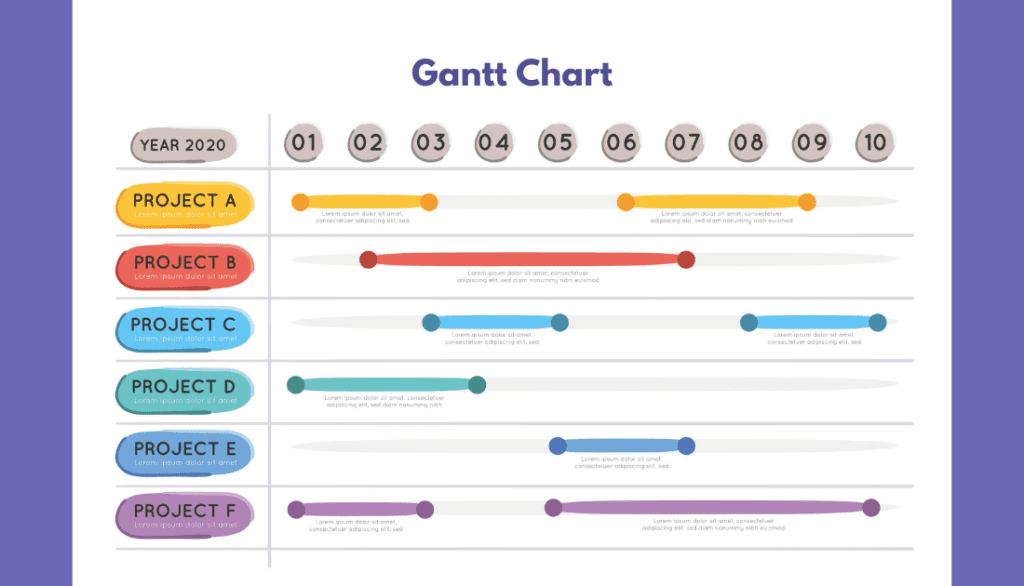
- A Gantt chart is a visual representation of a project schedule that uses bars to display the start and end dates of project activities. It provides a timeline view of the project, with tasks displayed horizontally and time displayed vertically.
- Gantt charts illustrate the sequence of tasks, their durations, and their overlaps in a graphical format. Each task is represented by a bar, and the length of the bar corresponds to the task’s duration. Dependencies between tasks are often shown using arrows connecting the bars.
- Gantt charts are widely used for project planning, setting milestones, communication, and progress tracking. They offer a clear overview of the project schedule, making it easy to see task dependencies and avoid project delays.
Relation Between CPM and Gantt Chart
- The critical path identified by the CPM is often used as the basis for creating a Gantt chart. Tasks that fall on the critical path are represented by bars on the Gantt chart, and their durations determine the length of the bars.
- The Gantt chart, with its visual representation of tasks and their durations, provides a convenient way to communicate the project schedule to stakeholders and team members. It highlights task start and end dates, showing how the project will progress over time.
- While CPM focuses on critical paths and calculating early start/finish and late start/finish times, Gantt charts emphasize the visual representation of the project schedule. They provide a broader perspective of the project timeline, task overlaps, and milestones.
How to Use Onethread to Implement Critical Path in Project Management?
Implementing the Critical Path Method (CPM) in project management requires a comprehensive tool that can handle task dependencies, durations, and the identification of the most extended sequence of tasks. Here’s how Onethread, an efficient project management tool with its advanced features, can be used to implement the Critical Path in project management:
Task Creation and Organization
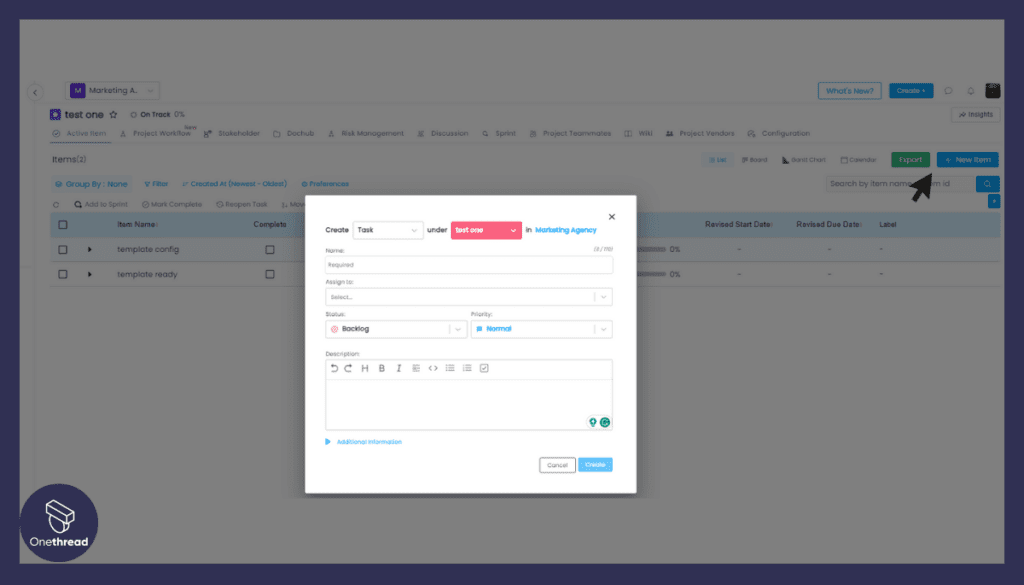
Onethread allows users to create tasks and sub-tasks, providing a granular level of detail necessary for projects.
Benefit: This aids in breaking down the project into its constituent tasks, a critical first step in CPM.
Task Dependencies
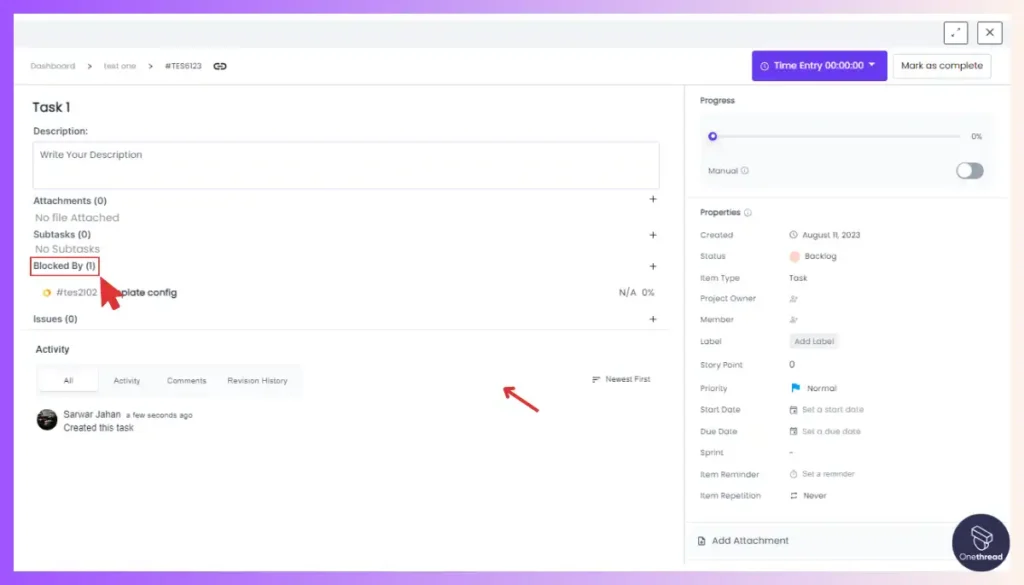
Within Onethread, tasks can be set as dependent on others, meaning one task can’t start until another finishes.
Benefit: CPM relies heavily on understanding task sequences. By setting dependencies, you’re outlining the order tasks need to follow, a foundational element of the method.
Duration Setting
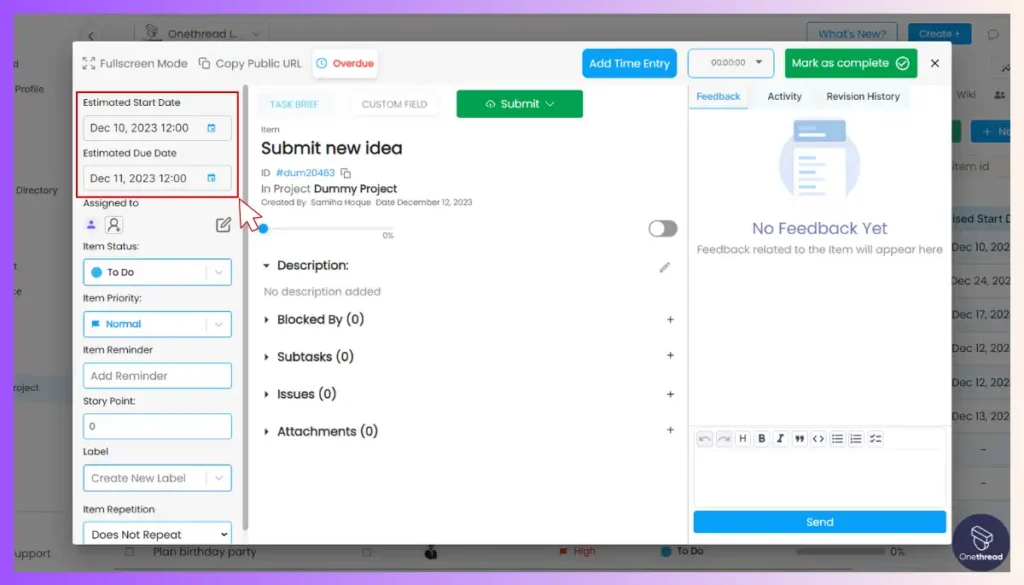
For every task or sub-task, Onethread lets you set a duration for completion.
Benefit: Knowing the length of each task helps in calculating the longest path through the project – the critical path.
Visual Project Timeline
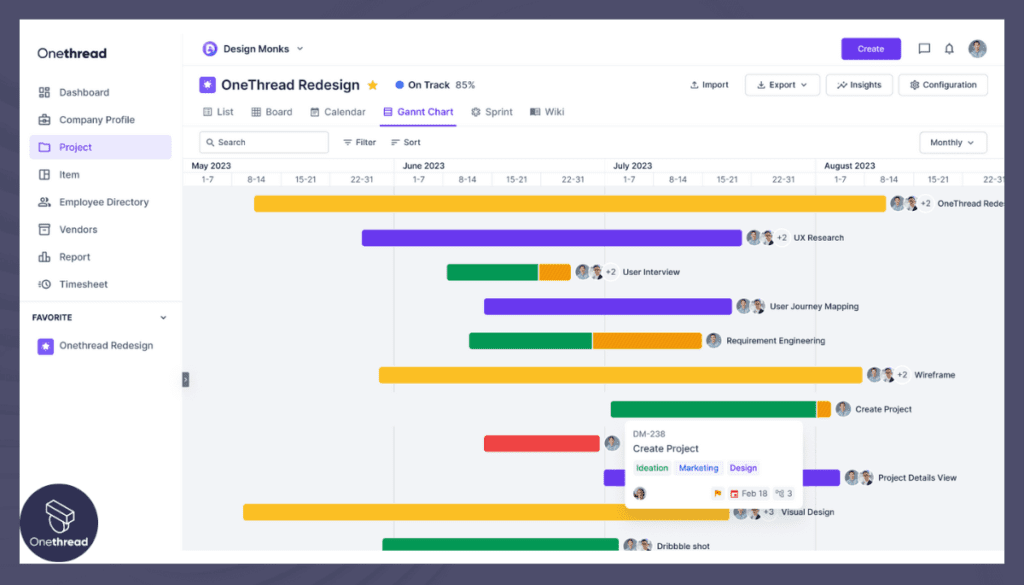
Onethread provides Gantt charts or similar visual timelines that display tasks, their durations, and dependencies.
Benefit: This visual representation is key for CPM, allowing managers to easily identify the critical path and monitor progress.
Real-time Collaboration
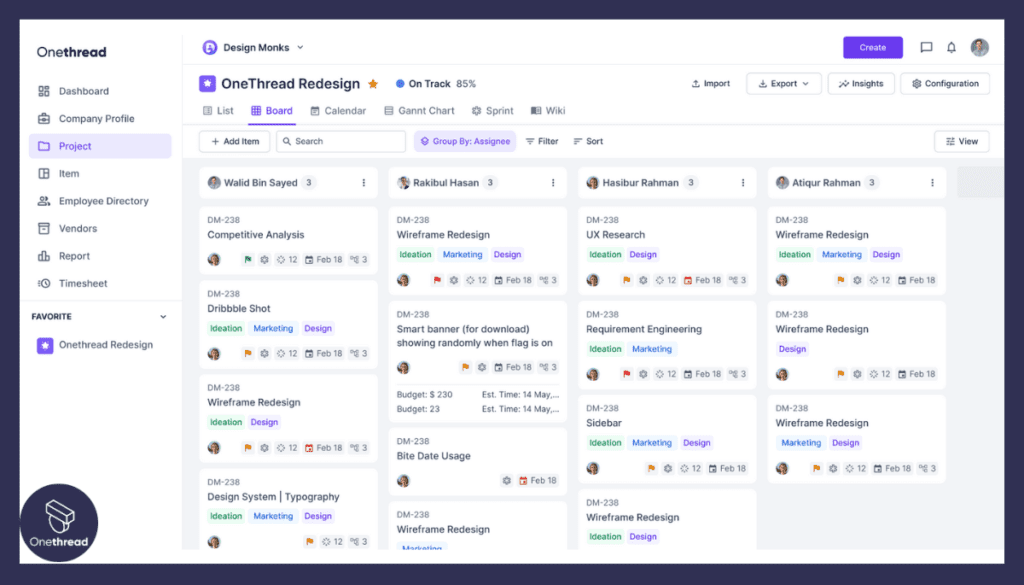
Team members can collaborate on tasks, update their status, and provide feedback.
Benefit: Instant updates ensure that any changes or delays in tasks, which might affect the critical path, are immediately visible.
Notifications and Alerts
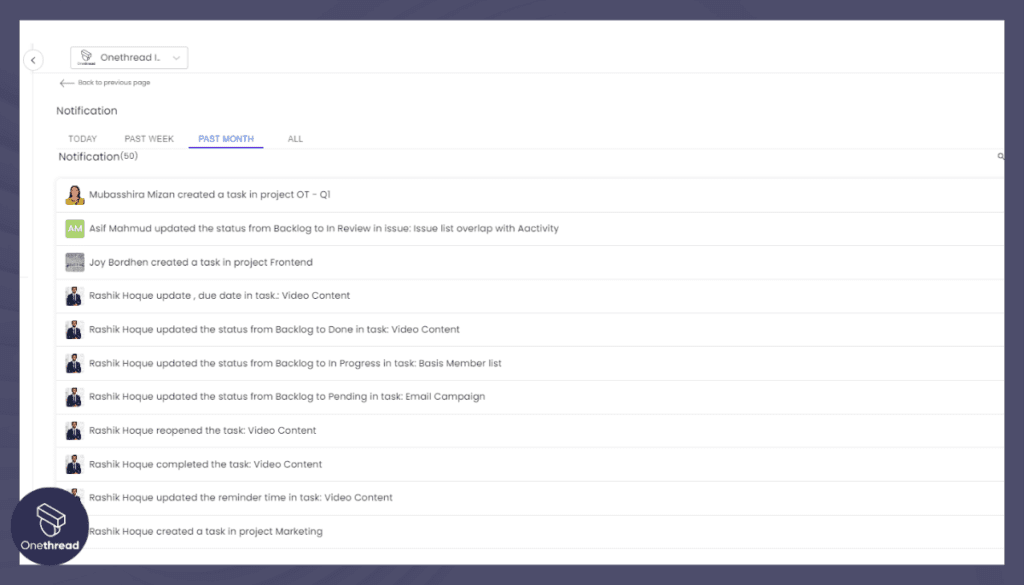
Onethread sends alerts if there are any delays or if tasks are not being executed as planned.
Benefit: Immediate notifications allow project managers to intervene and make adjustments before the overall project is impacted.
Integrated Resource Management
Allocate resources to specific tasks and monitor their utilization.
Benefit: Resource allocation is a component of CPM, ensuring that tasks on the critical path have the necessary resources when needed.
Reporting
Generate reports to analyze the performance of your project against the planned critical path.
Benefit: Regular analysis ensures you stay on track and can make proactive decisions if deviations occur.
Bottom Line
Now it’s time to wrap up our enlightening voyage into the realm of the Critical Path Method. You’ve armed yourself with a powerful arsenal of project management wisdom, enabling you to conquer complexities and achieve remarkable results.
Embrace the CPM with confidence, and watch how it transforms your approach to planning, scheduling, and executing projects. Remember, in the tumultuous sea of project management, the Critical Path Method shall forever remain your guiding star.
As you continue to refine your skills and lead teams to success, let the CPM be your trusted companion on this enthralling adventure. Here’s to a future filled with efficient projects, streamlined workflows, and triumphs beyond imagination.
May your path always be critical, and your journey unforgettable! Until we meet again, sail on, intrepid project managers!
